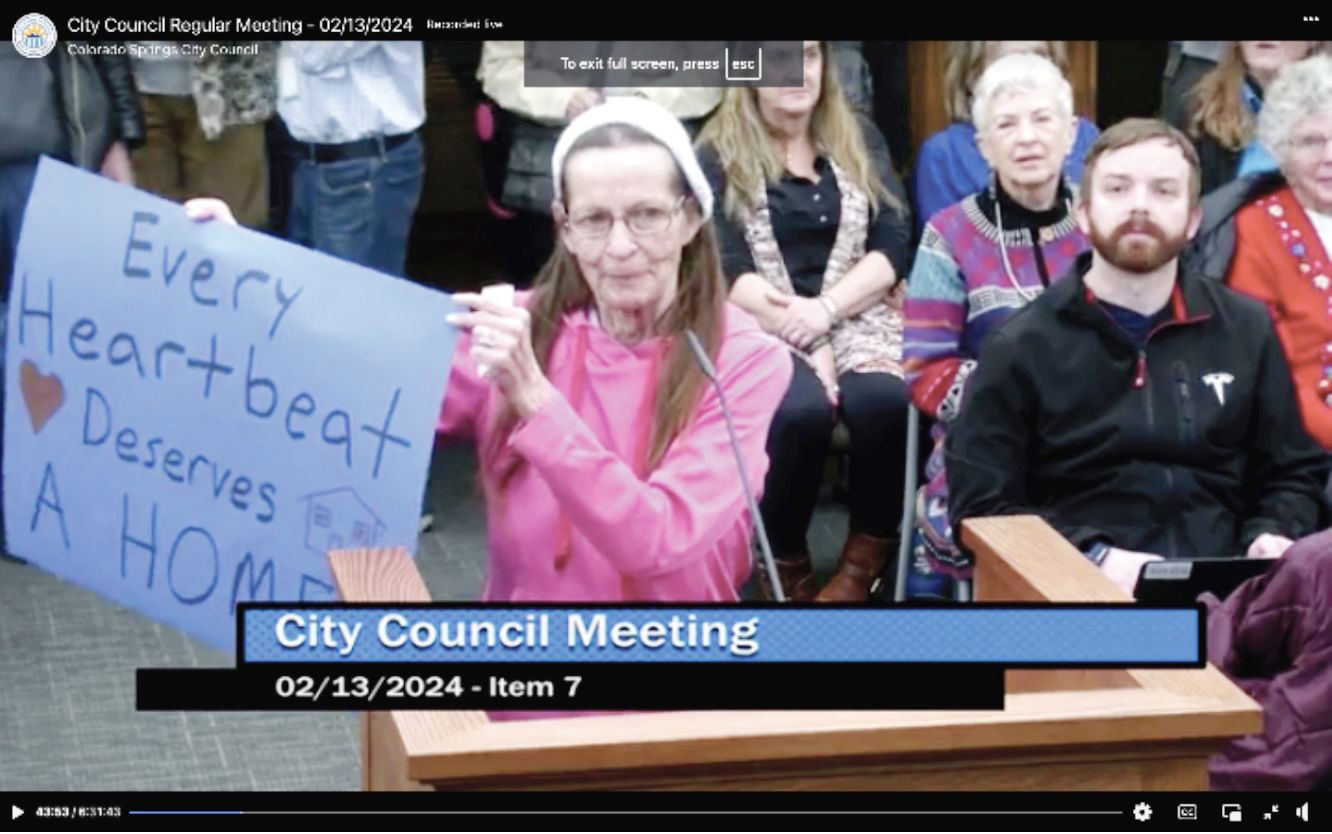This week, the Metro Denver Homeless Initiative, representing Colorado’s four Continuums of Care (CoCs), including the Pikes Peak CoC, released the state’s first-ever comprehensive State of Homelessness Report. This report provides baseline data on housing instability across Colorado and outlines pathways toward lasting solutions for homelessness.
The report notes that in 2024, 52,806 people in Colorado sought housing and services related to homelessness through Colorado’s Homeless Management Information System (COHMIS) partner agencies. COHMIS collects information about individuals and families experiencing homelessness, as well as those at risk of homelessness, to track the services they receive. In the Pikes Peak region, 6,846 sought housing assistance in 2024, comprising 13% of the state’s homeless population.
“This is the culmination of many months of work,” said Jason Johnson, director of the Metro Denver CoC, during a press briefing Tuesday. “This is the first time that the four CoCs across Colorado have collaborated in this way to make sure that there is quality data that really emphasizes the scale of the crisis of homelessness across the state of Colorado. This really is a baseline report. This puts us in a good position in future years to look at trends and to understand what’s working and what’s not. This is a detailed data set that incorporates homeless management information system data as well as point-in-time data and data from the Department of Education in 2024, and really will be an annual report that we hope will highlight the importance of data-driven solutions, as well as using data to accurately convey the crisis of homelessness that’s impacting every community across Colorado.”
In addition to providing data about the number of homeless people across the state, the report also looks at issues contributing to homelessness. “This report shows that health and housing are connected,” said Johnson. “More than half of the individuals are living with some kind of disabling condition – this is a health condition that likely impacts their ability to work and keep stable housing. This report highlights a pretty big affordability gap and specifically points to data showing that in order to afford a two-bedroom apartment in Colorado, someone would need to work more than two full-time jobs at minimum wage to pay for that apartment. So this really highlights the affordability challenge inside of our housing market.”
This puts us in a good position in future years to look at trends, and to understand what’s working and what’s not. – Jason Johnson, director of the Metro Denver CoC
Johnson noted that ultimately, the solution to homelessness is homes. “This data highlights that 30% of those individuals who have accessed COHMIS are chronically homeless,” he said. “That points to a need for permanent supportive housing. That is a permanent housing resource paired with important services for people with a disabling condition, and while I’m really proud in the Denver metro area, there have been more and more programs developing and operating permanent supportive housing, we need a lot more. Any time possible that I have an opportunity to engage with elected leadership at the city or county level, really encouraging folks to take a look at their own housing targets and housing goals and ensure that they’re meeting those because there’s really one solution to homelessness, and that’s housing.”

In Colorado Springs, groups like the Colorado Springs Pro-Housing Partnership have called for changes to zoning codes and an emphasis on higher-density, affordable housing projects in the region, but those efforts are often met with pushback from community activist groups like Westside Watch, started by newly elected El Paso County Commissioner Bill Wysong.
“We are in need, in the Pikes Peak region, of not only just affordable housing, but attainable housing,” said Merrina Mendez, community relations coordinator for Community Health Partnership, which is part of the Pikes Peak CoC. “We have a handful of projects within the Pikes Peak region that are offering permanent supportive housing, but we need more. So, this report, we’re excited to see – in writing – that housing individuals who are experiencing chronic homelessness is working.”
The report highlighted the work of the Colorado Springs Homeless Union, noting, “In the Pikes Peak Region, a service provider has partnered with people with lived experience to form the Colorado Springs Homeless Union, a body that amplifies the voice of those served by the homelessness response system. The Union hopes to begin collaborating with policymakers in local governments to create solutions that better satisfy the unhoused population’s material needs for shelter, transportation, sanitation, and connection to resources. ”
Mendez also noted that housing is only part of the solution. “We hear the term housing first, but that doesn’t mean housing only, right?” she said. “We’re talking about services that surround housing, case management, access to transportation, medical needs, mental health, all of those things play a key role into permanent supportive housing.”
The report highlights the Statewide Supportive Housing Expansion (SWSHE) pilot, launched in 2022, which leveraged American Rescue Plan Act (ARPA) resources to expand supportive housing services across Colorado, including in rural areas where help is harder to find. By combining state and federally funded vouchers with ARPA funding for supportive services, providers were able to help Medicaid members with complex needs get into and maintain supportive housing opportunities.
Mendez and other homeless advocates hope the report will be able to inform policy decisions around housing and homelessness moving forward. “This isn’t meant to be an advocacy piece; we’re showing real-life data,” said Mendez. “We’re hoping that with this data, it helps that conversation and steering the direction of that [conversation], with real numbers, in real data, that these are actual solutions that we are seeing that are proven to be true. We’re hoping that [the data] helps in supporting that effort moving forward.”

